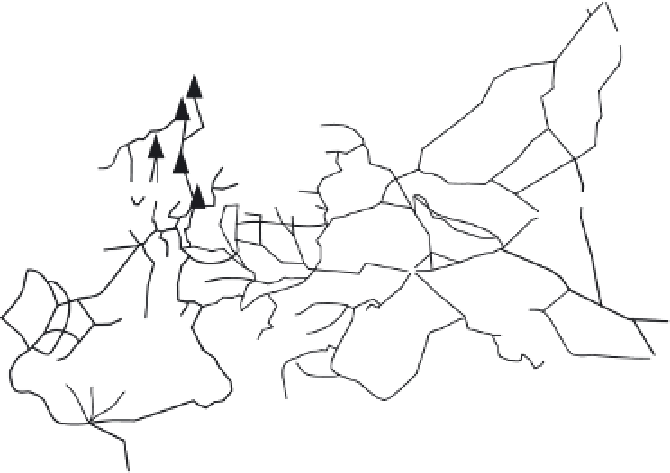Environmental Engineering Reference
In-Depth Information
exports of refined products added about 600 Mt. These
exports were valued at about $780 billion, or roughly
55% of all international fuel sales, a total was higher than
the world's imports of food (about $680 billion) but
lower than the value of automotive products (about
$910 billion). About 45 oil-producing countries are
exporters, and more than 130 countries importers, of
crude oil and refined oil products. The global dominance
of Middle East exports is obvious. The six largest
exporters (Saudi Arabia, Iran, Russia, Norway, Kuwait,
and United Arab Emirates) sell just over 50% of the
traded total, and the six largest importers (United States,
Japan, Germany, South Korea, Italy, and France) buy
70% of all shipments (BP 2006).
As noted earlier (see section 8.3), pipelines are supe-
rior to any other form of oil transportation over land.
Only large riverboats and ocean tankers are cheaper car-
riers of energy. The United States has had long-distance
pipelines for domestic distribution of crude oil since the
1870s. These were eclipsed only during the 1970s by
the world's longest crude oil pipelines laid to move West-
ern Siberian crude oil to Europe.
Russia, Canada, Norway, the Netherlands, and Algeria
are the largest exporters of piped natural gas, accounting
for just over 90% of the world total. Europe has a partic-
ularly complex network of trunk lines bringing gas from
Russia, the North Sea, and Africa (fig. 9.3). Shipments
from Indonesia, Algeria, and Malaysia dominate the
9.3 Europe's complex network of major natural gas pipelines
(only the largest natural gas fields are identified). Western
Siberia, the North Sea, and North Africa are major sources of
supply.














































































































































































